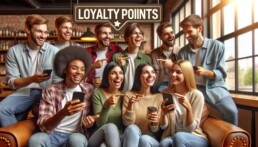
Maximizing the impact of loyalty points requires practical tactics and clear measurement of success.
In this blog post, we explore effective strategies like tiered programs, point multiplier events, and personalized rewards.
At Reward the World, we will also look at key indicators such as customer retention rates and engagement levels, alongside best implementation practices.
What’s the Best Way to Use Loyalty Points?
Effective use of loyalty points can significantly enhance customer engagement and retention. We focus on three tactical approaches: tiered loyalty programs, point multiplier events, and personalized rewards.
Leveraging Tiered Loyalty Programs
Tiered loyalty programs can elevate how customers perceive and engage with your brand. These programs categorize members into different levels based on their activity. A notable example is the Sephora Beauty Insider program, where members achieve higher status and receive better rewards as they spend more. This creates a powerful sense of progression and exclusivity.
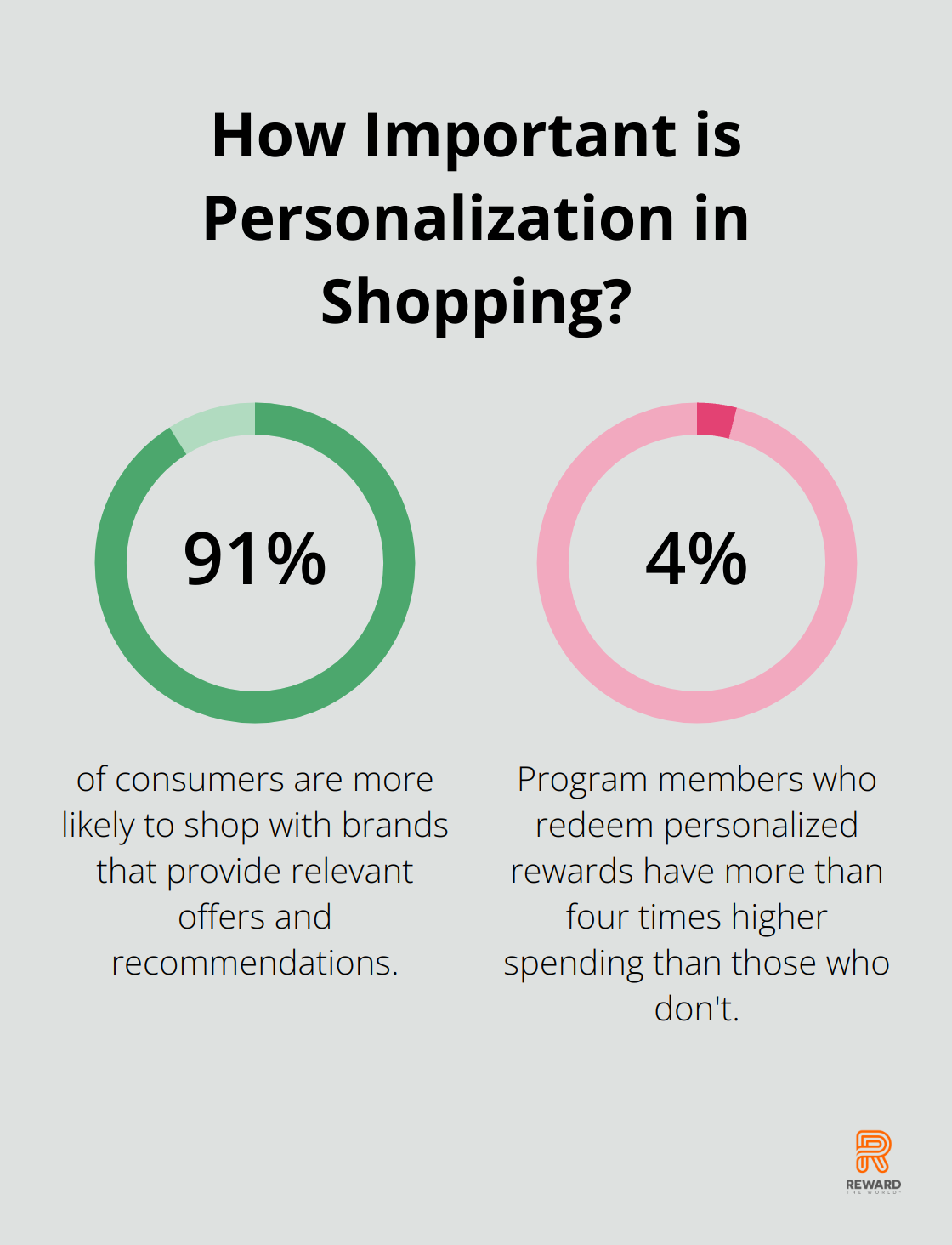
Based on the Global Customer Loyalty Report 2022, businesses with tiered programs report ROI increases up to 1.8 times higher than those without. The structure should be clear and the benefits at each level should be compelling. Offering early access to sales, free shipping, or exclusive products can effectively entice customers to strive for higher tiers.
The Impact of Point Multiplier Events
Point multiplier events can generate significant short-term engagement. These events temporarily increase the number of points customers earn per transaction. For example, during a weekend promotion, purchases might earn triple points. This encourages immediate action and can drive a surge in sales.
When planning these events, ensure they are adequately promoted through email campaigns and social media. Aligning these events with specific sales campaigns or new product launches can amplify their impact.
Crafting Personalized Rewards
Personalization is critical in today’s loyalty landscape. Accenture reports that 91% of consumers are more likely to shop with brands that provide relevant offers and recommendations. Personalized rewards cater specifically to individual customer preferences based on purchase history and behavior.
For instance, using past purchase data to offer targeted rewards such as discounts on favorite product categories or exclusive access to new arrivals can significantly enhance customer satisfaction and loyalty. According to Forbes, program members who redeem personalized rewards have more than four times higher spending than those who don’t. The effort heuristic suggests customers value rewards more when they perceive they’ve earned them uniquely, so personalized rewards can capitalize on this psychological principle effectively.
Incorporating these tactics strategically can not only boost customer engagement but also drive retention and revenue growth. Each tactic offers a unique way to connect with customers and encourage repeat business, thus fostering long-term loyalty.
How to Measure Success of Loyalty Points Programs
Measuring the success of loyalty points programs is vital for understanding their effectiveness and impact on customer behavior. To get a clear picture, several key performance indicators (KPIs) are indispensable.
Key Performance Indicators (KPIs) to Track
KPIs offer a concrete way to gauge the success of loyalty programs. Metrics such as redemption rate, customer retention rate, and engagement level are crucial. The redemption rate shows the percentage of points customers actually use, reflecting the program’s appeal and value. According to the Loyalty Trends Report 2024, top-tier loyalty programs can achieve redemption rates as high as 80%.
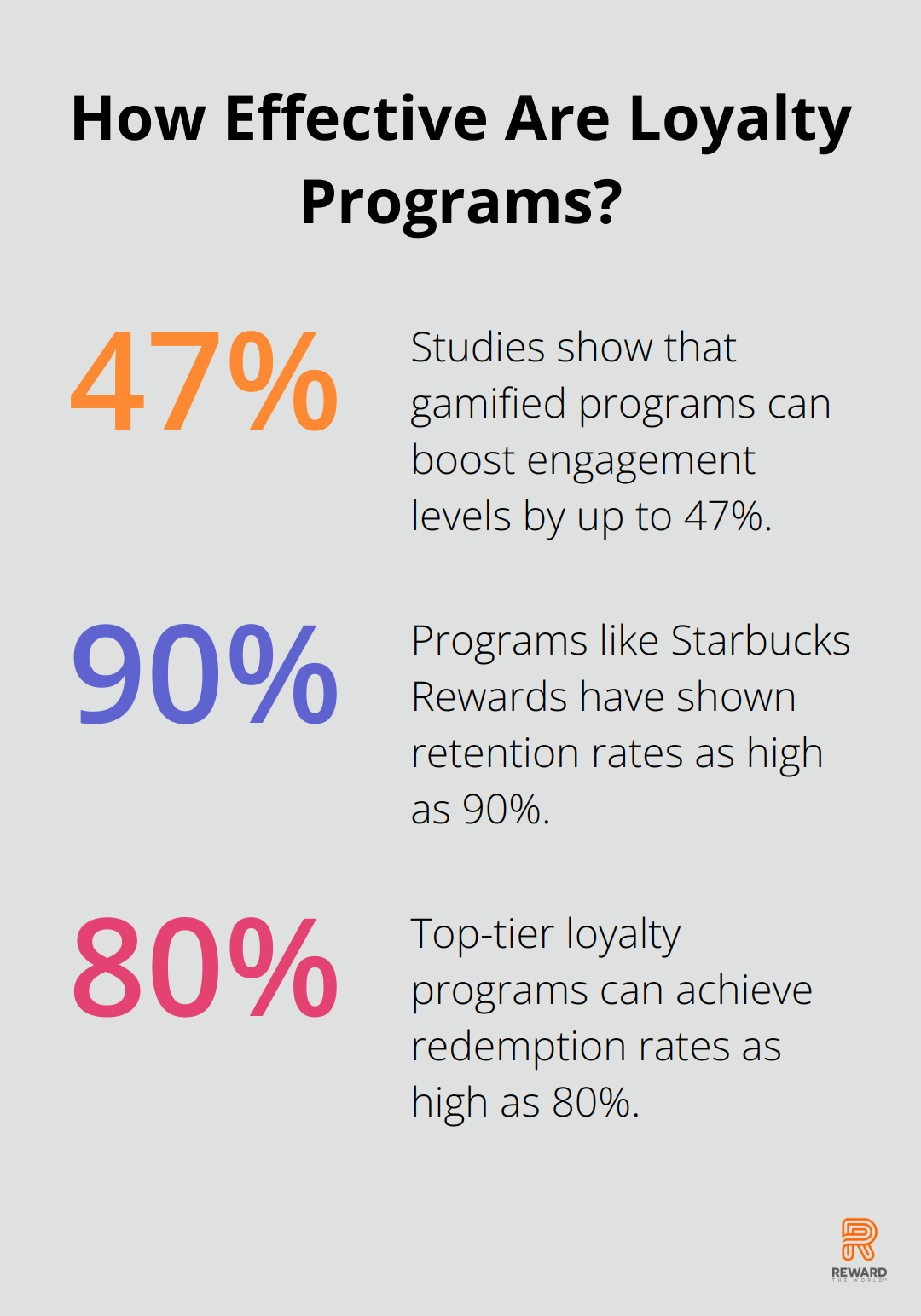
Customer retention rate is another important KPI. It indicates how well the program retains customers over time. A well-executed loyalty program can improve retention rates by up to 5%. Even a small boost in retention can translate into a significant revenue increase, as returning customers tend to spend more – 67% more on average, according to Zendesk.
Customer Retention Rates
Retention rates are a direct measure of a program’s ability to keep customers coming back. This metric is highly actionable; if low, it signals the need for program adjustments. Programs like Starbucks Rewards have shown retention rates as high as 90%, demonstrating that an appealing loyalty program can drastically reduce churn.
To improve retention rates, tailor the program to customer preferences. Analyze purchase patterns and tailor rewards accordingly. For instance, Netflix uses viewership data to personalize recommendations, resulting in higher retention rates. Similarly, loyalty programs that leverage data for personalization can see comparable outcomes.
Redemption Rates and Customer Engagement
Redemption rates reveal not just engagement but also program attractiveness. A high redemption rate means customers find value in the rewards. For example, the Marriott Bonvoy loyalty program boasts a redemption rate of 70%, reflecting strong customer engagement.
To boost redemption rates, ensure a diverse range of attractive rewards. Gamification elements, such as challenges or achievement badges, can also increase engagement. Studies show that gamified programs can boost engagement levels by up to 47%.
Additionally, frequent promotions and reminders can significantly impact redemption activity. Email marketing campaigns are effective in this regard, with response rates of up to 25%. Brands should also consider seasonal promotions to make redemption timely and relevant.
By focusing on these KPIs, brands can accurately measure the success of their loyalty points programs and make informed decisions to enhance engagement and retention. Tracking these metrics provides actionable insights that are essential for refining and optimizing loyalty strategies.
What Are the Best Practices for Implementing Loyalty Points Programs
Implementing loyalty points programs successfully involves various practical strategies to enhance customer engagement and satisfaction.
Seamless System Integration for Efficiency
Integrating a loyalty points program with existing systems is a non-negotiable aspect of implementation. A seamless integration ensures the program functions smoothly with your CRM and POS systems. Data synchronization between these systems allows for real-time updates on points accrual and redemption, ensuring customers have a consistent experience across all touchpoints. According to PassKit, companies that offer integrated solutions report higher customer satisfaction rates, as the system can manage interactions efficiently through centralized data.
Clear and Consistent Communication
Communication is the bedrock of any loyalty program. Clear, consistent communication about the program’s benefits and updates keeps customers informed and engaged. Email marketing significantly boosts engagement, with industry response rates reaching up to 25%. Social media also plays a crucial role in regular communication. Effective use of platforms like Facebook and Instagram can announce promotions, point multiplier events, and new reward offerings directly to your customer base. This not only keeps the program at the forefront of customers’ minds but also drives participation and redemption rates.
Regular Updates and Enhancements
Stagnation can kill a loyalty program. Regular updates and enhancements keep the program dynamic and exciting. Incorporating feedback from customers helps identify pain points and areas for improvement. For example, updating the reward catalog periodically with new, desirable items keeps the program fresh and appealing. Additionally, integrating gamification elements such as badges or challenges can rejuvenate engagement. Studies show that gamified programs can increase engagement by up to 48%.
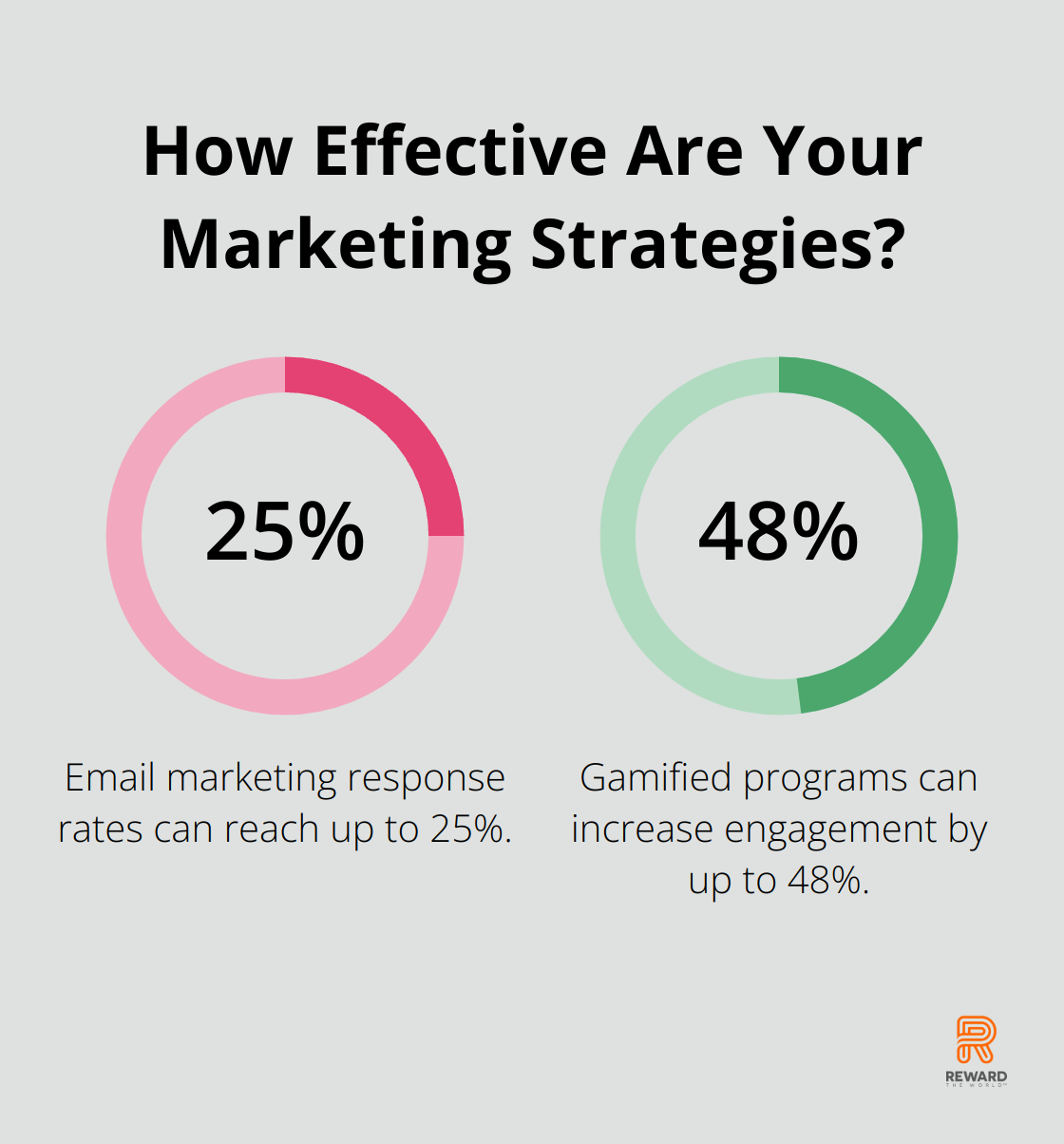
Operational upgrades should also be considered. Leveraging a tech stack that supports no-code configuration can facilitate easier management and updates, allowing for quick adjustments based on customer behavior and feedback. This flexibility is critical in responding to market trends and keeping up with consumer expectations.
Strategically implementing these best practices can build a robust loyalty points program, driving higher customer retention, increased engagement, and ultimately, greater revenue growth.
Conclusion
Maximizing the impact of loyalty points requires effective tactics and clear measurement. Using tiered programs, point multiplier events, and personalized rewards are proven strategies to enhance customer engagement and retention. Tiered programs create a sense of progression, with the Global Customer Loyalty Report 2022 showing businesses reporting ROI increases up to 1.8 times higher when compared to non-tiered ones. Point multiplier events drive short-term engagement and sales surges, while personalized rewards cater to individual preferences, leading to four times higher spending by program members, according to Forbes.
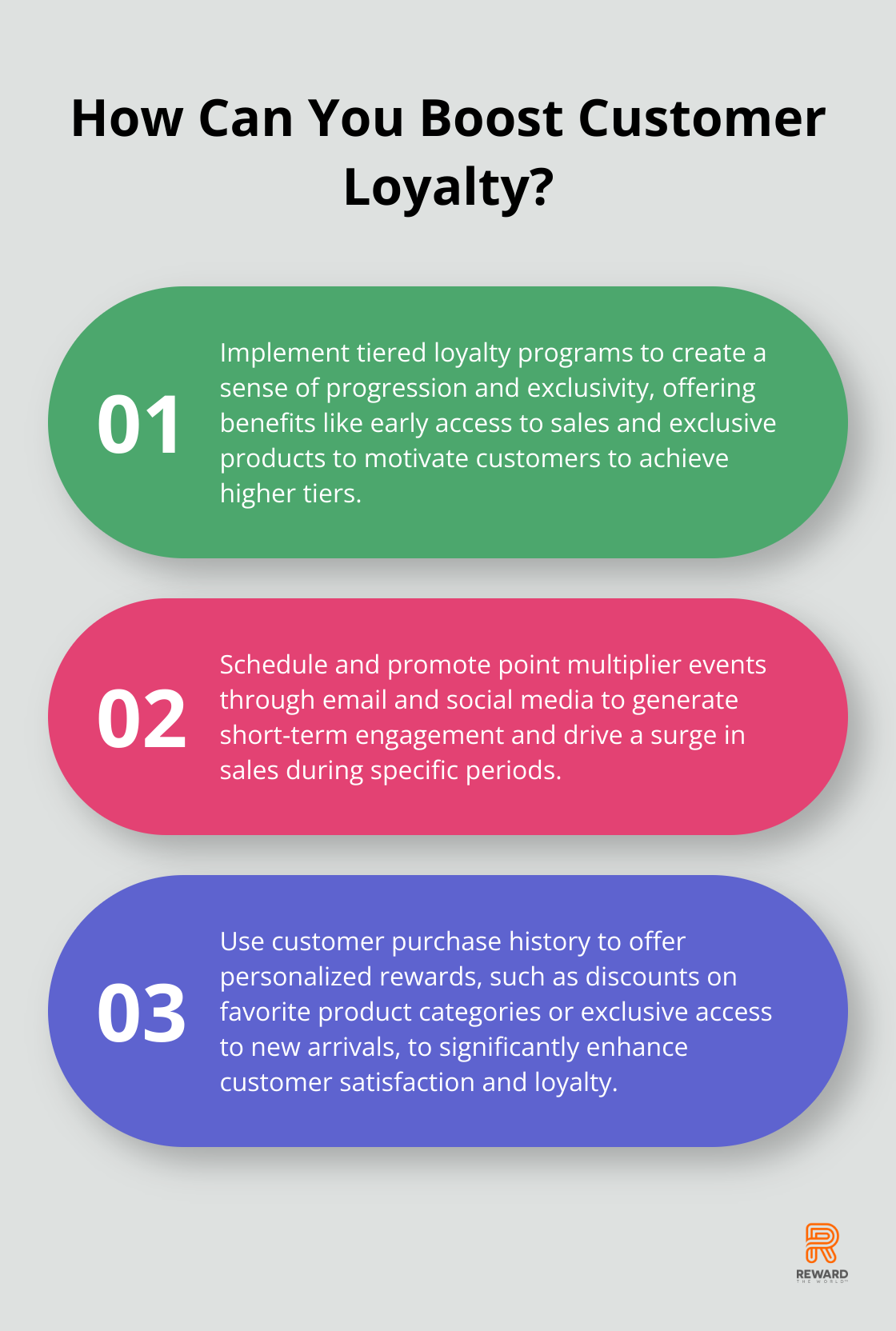
Measuring success with KPIs like redemption rates, customer retention rates, and engagement levels is essential. Top-tier loyalty programs can achieve redemption rates as high as 80%, and well-executed ones improve retention rates by up to 5%. Programs like Marriott Bonvoy and Starbucks Rewards have demonstrated high retention and engagement through attractive redemption options and effective communication strategies.
Best practices for implementing loyalty points programs focus on seamless system integration, clear communication, and regular updates. Integrated solutions increase customer satisfaction by ensuring consistent experiences. Regular communication through emails and social media boosts engagement, while program updates and gamified elements prevent stagnation and keep customers excited.
Reward the World offers a dynamic platform for businesses seeking to foster customer loyalty and enhance engagement. With seamless integration and robust analytics, it supports over 250 million users globally. Discover more at Reward the World and explore how our turnkey solution can elevate your loyalty points program, drive customer retention, and boost revenue.
